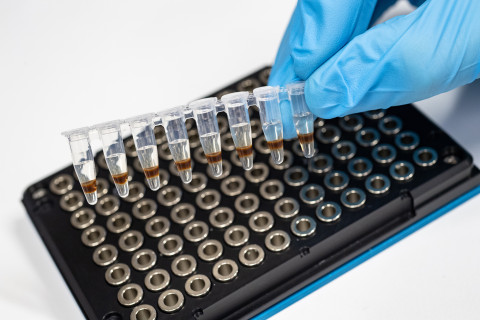The doctoral dissertation in the field of Neuroscience will be examined at the Faculty of Health Sciences at Kuopio campus. The public examination will be streamed online.
What is the topic of your doctoral research? Why is it important to study the topic?
The research aimed to identify circulating molecular biomarkers that would allow the evaluation of the severity of traumatic brain injury (TBI) and prediction of the development of post-traumatic epilepsy (PTE). TBI is an alteration in brain function caused by an external force, and it is estimated that there are globally 60–70 million TBIs each year. The most common causes of TBI are traffic accidents and falls. Patients with TBI have an increased risk of PTE development. Most TBIs are mild, but PTE can also develop after mild injury. There are currently no treatments to prevent epileptogenesis, the process leading to PTE development. Biomarkers that could identify the patients with an increased risk of PTE would greatly improve the development of new treatments.
What are the key findings or observations of your doctoral research?
We investigated TBI-induced changes in the microRNA profile of blood plasma in an animal model of PTE. We hypothesised that TBI induces changes in the profile of microRNAs that are released from the cells in the brain and that end up in the blood circulation, and these changes could be used in the evaluation of injury severity and the prediction of PTE development. We identified several microRNAs in rat plasma samples that were acutely upregulated or downregulated in the TBI rats compared with the control group. Many of these miRNAs are expressed especially in the neurons in the brain. We selected seven microRNAs for further validation. The increased concentrations of microRNAs in plasma differentiated the TBI rats from control groups, and higher microRNA levels correlated with a larger cortical lesion in the brain. In addition, six out of seven investigated microRNAs seemed potential biomarkers for mild TBI, as they differentiated the sham-operated control group from another control group that did not undergo any procedures. In our study, 25% of the rats with TBI developed PTE during the 6-months follow-up, but the investigated microRNAs did not predict PTE development.
In addition to microRNAs, we investigated the concentrations of a protein that is important for neuronal structure, neurofilament light chain (NF-L), in rat blood plasma after TBI. NF-L is a known biomarker for axonal damage in neurons, but whether the levels of NF-L in blood circulation could predict PTE development has not been previously investigated. We found that the acutely increased levels of NF-L in plasma after TBI correlated with a larger cortical lesion, but they did not predict somatomotor recovery, cognitive impairment or PTE development.
How can the results of your doctoral research be utilised in practice?
Although we did not discover biomarkers for post-traumatic epileptogenesis, the investigated miRNAs may be useful in TBI diagnostics. Most of the identified miRNA biomarkers for TBI are also expressed in humans, meaning that they could potentially be used especially in identification of mild TBI. The microRNAs may also have potential in evaluation of the injury severity and outcome prediction. However, it first must be investigated whether the results can be validated in patient samples.
What are the key research methods and materials used in your doctoral research?
The research was part of the EU-funded international, multidisciplinary EPITARGET project that aimed to identify new biomarkers for epileptogenesis. The research made use of an exceptionally large preclinical study cohort. TBI was induced in rats by lateral fluid-percussion method. The 6-months follow-up included for example behavioral tests and monitoring of the cortical lesion evolution with magnetic resonance imaging. To diagnose PTE, the brain activity of rats was monitored with EEG continuously during the last month of the follow-up. In the end, the brains were also studied by histologic staining. The blood plasma samples collected from the rats were first analyzed by microRNA sequencing, and the microRNAs selected for further validation were analyzed by droplet digital PCR (ddPCR). To measure the concentration of NF-L in plasma, we used single molecule array (SIMOA), which is a method that can detect very small protein concentrations.
The doctoral dissertation of Mette Heiskanen, MSc, entitled Circulating plasma microRNAs and neurofilament light chain as biomarkers for injury severity and post-traumatic epileptogenesis following an experimental traumatic brain injury will be examined at the Faculty of Health Sciences. The Opponent in the public examination will be Professor Merab Kokaia of Lund University, and the Custos will be Professor Asla Pitkänen of the University of Eastern Finland.
For further information, please contact:
Mette Heiskanen, MSc, [email protected], https://uefconnect.uef.fi/en/person/mette.heiskanen/


